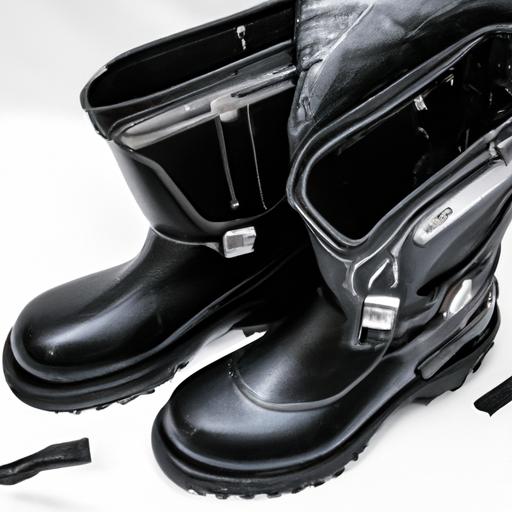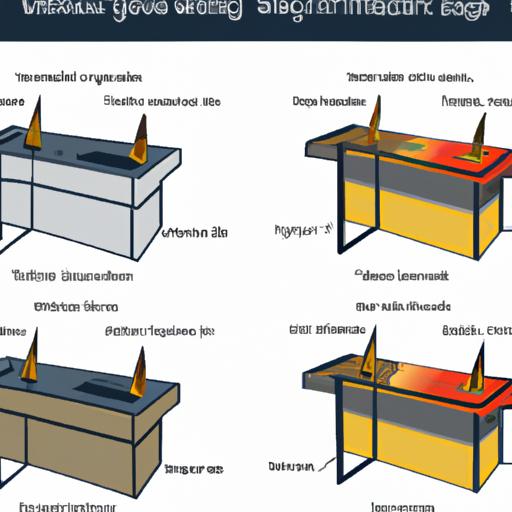Introduction
When it comes to welding techniques, there are a few popular methods that every aspiring welder should be familiar with. In this article, we will delve into the world of welding and explore the key differences between three prominent techniques: MIG welding, TIG welding, and arc welding. Understanding these techniques is crucial for any welder, as it allows them to choose the right method for their specific projects.
MIG Welding
Definition and Explanation of MIG Welding
MIG welding, also known as Metal Inert Gas welding, is a versatile and widely used welding technique. It involves the use of a consumable wire electrode that is fed through a welding gun. The welding gun also releases a shielding gas, typically a mixture of argon and carbon dioxide, which protects the weld pool from atmospheric contaminants.
Advantages and Disadvantages of MIG Welding
MIG welding offers several advantages that make it a popular choice for many applications. It is relatively easy to learn and can be used on a wide range of materials, including steel, aluminum, and stainless steel. MIG welding also allows for high welding speeds, making it efficient for large-scale projects.
However, MIG welding does have some limitations. It tends to produce more spatter compared to other welding techniques, which can require additional clean-up. Additionally, MIG welding may not be suitable for thin materials as it can lead to excessive heat input and distortion.
Comparison of MIG Welding with TIG Welding and Arc Welding
When comparing MIG welding with TIG welding and arc welding, several factors come into play. MIG welding is known for its speed and efficiency, making it ideal for projects that require high productivity. On the other hand, TIG welding offers superior control and precision, making it a preferred choice for intricate welds. Arc welding, also known as stick welding, is often chosen for its simplicity and ability to handle rough and dirty surfaces.
Subheading: Pros and Cons of MIG Welding
Let’s take a closer look at the pros and cons of MIG welding:
Pros of MIG Welding
- Versatility: MIG welding can be used on various materials, making it a versatile option for many projects.
- High welding speeds: MIG welding allows for faster welding speeds, increasing productivity.
- Easy to learn: Compared to other welding techniques, MIG welding is relatively easy to learn and master.
Cons of MIG Welding
- Spatter: MIG welding tends to produce more spatter, which can require additional clean-up.
- Not suitable for thin materials: MIG welding may not be the best choice for thin materials, as it can cause excessive heat input and distortion.
Now, let’s move on to the next section where we will explore another welding technique: TIG welding.
MIG Welding
MIG welding, also known as Metal Inert Gas welding, is a widely used welding technique that utilizes a consumable wire electrode. This electrode, along with a shielding gas, melts and joins the base metals together. MIG welding is known for its versatility and ease of use, making it a popular choice among both professionals and hobbyists.
One of the primary advantages of MIG welding is its high welding speed. The continuous wire feed allows for faster and more efficient welding, making it ideal for projects that require quick turnaround times. Additionally, MIG welding can be used on a wide range of materials, including stainless steel, aluminum, and mild steel.
However, MIG welding does have its drawbacks. Due to the reliance on a shielding gas, it may not be suitable for outdoor or windy conditions. The equipment required for MIG welding can also be more expensive compared to other techniques. Furthermore, MIG welding may result in spatter, which requires additional cleaning and post-welding processes.
When comparing MIG welding with TIG welding and arc welding, MIG welding offers distinct advantages. Unlike TIG welding, MIG welding does not require precise control over the electrode, making it easier to learn and operate. Additionally, MIG welding is generally faster than arc welding, which uses a non-consumable electrode.
In summary, MIG welding is a versatile and efficient welding technique suitable for a wide range of applications. While it may have limitations, its speed and ease of use make it a popular choice in various industries. Understanding the pros and cons of MIG welding will help you determine whether it is the right technique for your specific welding needs.
Subheading: Pros and Cons of MIG Welding
Key Differences between MIG Welding, TIG Welding, and Arc Welding
When it comes to welding, understanding the key differences between various techniques is crucial. MIG welding, TIG welding, and arc welding are three popular methods, each with its own unique characteristics. Let’s delve into the details and explore the factors to consider when choosing the most suitable welding technique for your project.
Detailed Comparison of the Three Welding Techniques
MIG Welding: Also known as Metal Inert Gas welding, MIG welding utilizes a consumable wire electrode and an inert gas to create an electric arc for welding. It is known for its versatility and ease of use, making it a popular choice for both professionals and beginners. MIG welding excels in speed and efficiency, making it ideal for projects that require high productivity. However, it may not be suitable for precision work due to its relatively lower control compared to other techniques.
TIG Welding: Tungsten Inert Gas welding, commonly referred to as TIG welding, employs a non-consumable tungsten electrode and an inert gas for shielding. This technique offers excellent control and precision, making it the go-to choice for delicate and intricate applications. TIG welding is known for creating clean and aesthetically pleasing welds with minimal spatter. However, it requires a higher skill level and is typically slower than MIG welding.
Arc Welding: Arc welding, also known as Shielded Metal Arc Welding (SMAW), employs a consumable electrode coated in flux, which releases gases to shield the weld pool. Arc welding is versatile and suitable for a wide range of materials and thicknesses. It is often preferred for its reliability and the ability to withstand harsh environments. However, it may produce more spatter and require more post-weld cleaning.
Factors to Consider when Choosing a Welding Technique
Several factors come into play when selecting the appropriate welding technique for your project:
-
Material Type and Thickness: Different metals and alloys require specific welding techniques. Consider the material you are working with and its thickness to determine the most suitable method.
-
Weld Quality and Aesthetics: If achieving a flawless appearance is crucial, TIG welding might be the best option due to its precise control and minimal spatter.
-
Skill Level: Assess your skill level and expertise in welding. Some techniques, like TIG welding, demand a higher level of proficiency, while others, like MIG welding, are more beginner-friendly.
-
Project Requirements: Consider the specific requirements of your project, such as welding speed, joint accessibility, and environmental conditions. These factors will help guide your decision.
By carefully evaluating these factors, you can make an informed choice when selecting between MIG welding, TIG welding, and arc welding for your welding project.
Remember, the right welding technique can make all the difference in achieving optimal results. Stay tuned as we explore the advantages and disadvantages of each technique in the upcoming section.
Subheading: Advantages and Disadvantages of MIG Welding
Conclusion
When it comes to welding, understanding the differences between MIG welding, TIG welding, and arc welding is crucial. Each technique has its own strengths and weaknesses, making it essential to choose the right method for your specific application.
Throughout this article, we have explored the definitions and explanations of MIG welding, TIG welding, and arc welding. We have also discussed the advantages and disadvantages of each technique, as well as compared them to one another.
By considering factors such as the type of material, desired weld quality, and project requirements, you can make an informed decision on which welding technique to employ. MIG welding offers speed and efficiency, making it suitable for large-scale projects. TIG welding, on the other hand, provides precision and control, ideal for intricate welding tasks. Meanwhile, arc welding remains a versatile option, suited for various applications.
In summary, the main keyword “mig welding vs tig welding vs arc welding” highlights the importance of understanding the distinctions between these welding techniques. By choosing the right method for your welding needs, you can achieve optimal results and ensure the durability and integrity of your welds.
Remember, whether you’re tackling a DIY project or working in a professional capacity, taking the time to research and select the appropriate welding technique will significantly impact the success of your welding endeavors.
So, which welding technique will you choose? The choice is in your hands!



